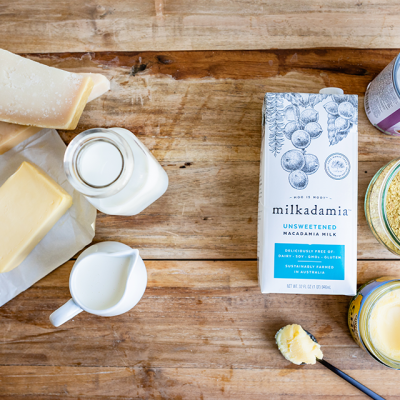If you have skin outbreaks, mood disorders, trouble sleeping, brain fog, low energy, cravings, allergies, digestive issues, food sensitivities or inflammatory chronic diseases such as diabetes or heart disease, it’s imperative you focus on regulating your blood sugar and increasing insulin sensitivity. There are a number of ways to do that. Some of my favorites include Intermittent Fasting Protein Cycling, increasing my intake of healthy fats and saving my carbohydrate intake until evening and including supplemental polyphenols like berberine and EGCG into my diet.
I also suggest incorporating four weekly sessions of HIIT (high-intensity interval training) and RET (resistance training) into your workout circuit. In my new book, Glow15, I reveal the secret to healthy aging and spoiler alert — maintaining good insulin sensitivity into your golden years is key to your longevity and quality of life.
As we age it’s natural to lose insulin sensitivity and this may be at the root of our most dreaded fears around aging — increased belly fat, loss of muscle mass, decreased cognition, poor mood, and of course, chronic disease. Overproduction of the hormone insulin creates inflammation and increases the release of harmful types of cytokines into the bloodstream. These cytokines are like little messengers encouraging disease in the body.
Insulin is produced anytime we eat, but even more so when carbohydrates are consumed. And especially when refined and processed carbs are eaten like the sort used in processed dairy products. A hormone prolific in dairy called IGF1 (insulin-like growth factor 1) has the ability to stimulate cell growth, which is one of the reasons insulin is linked to chronic disease like cancer and obesity. In terms of aging and other symptoms of insulin resistance, too much insulin circulating increases freely circulating IGF1. The “free” part here is important because it’s what’s unbound and available in our system that is the most active, or potent.
While real dairy from pastured cows fed a natural grass-fed diet can be a wonderful source of healthy fat and nutrition, especially if you are increasing your fat intake, unfortunately, most dairy in commercial products, coffee shops, café’s and restaurants are not. Instead, the less expensive version is used. Conventional dairy not only contains added growth hormones and antibiotics that are toxic to our systems, but it is also likely intensely pasteurized with very high heat. While this is protective against human consumption of harmful bacteria, the high heat denatures nutrients in the milk and decreases levels of lactase. Lower lactase available in the milk makes it difficult for people with lactose intolerance to properly digest and enjoy dairy.
If you tolerate dairy, choose the highest quality you can. If you don’t have access to high-quality dairy, there are amazing substitutes that are a great stand-in for your recipes and happen to provide nutrition and flavor!
My top four choices to swap out for dairy include:
Instead of cream, try coconut cream.
The flavor/texture: Slightly sweet, luscious, creamy. Great in soups, smoothies and as a treat in whipped cream. Nutrition perks: An excellent source of minerals like iron, magnesium, phosphorus, potassium, and zinc as well as B-vitamins such as folate, thiamin, vitamin B6, niacin, and pantothenic acid. Coconut fat is mostly saturated medium-chain fatty acids (MCFAs). MCFAs have been shown to boost HDL (good cholesterol), stabilize blood sugar and decrease cravings, and provide an immediate source of usable energy since they are quickly absorbed.
Favorite brand: Let’s Do Organic
Instead of cheese, try nutritional yeast.
The flavor/texture: Slightly nutty and cheesy. Great sprinkled on roasted asparagus or broccoli, casseroles or sauces. Nutrition perks: It’s a complete source of protein and provides important B vitamins like folate, thiamin, B6, niacin, and riboflavin. It is also a source of beta glucans, glutathione, selenium, and zinc, which benefit immunity.
Favorite brand: Bob’s Redmill
Instead of milk, try macadamia milk.
The flavor: It’s creamy and slightly sweet with hints of unmistaken real macadamia flavor. It tastes exactly just like you’d hope milk from real mac nuts would taste like. Wonderful used in place of milk in smoothies, desserts, and sauces. Nutrition perks: Great source of monounsaturated oleic fatty acids which can increase HDL and lower LDL. Good source of calcium, iron, magnesium, manganese, zinc and B vitamins too.
Favorite brand: Milkadamia
Instead of butter, try ghee.
The flavor: When the milk solids of butter are removed and then simmered for a long time you’re left with a nutty, rich, deep buttery flavor in ghee. Tasty cooked with sautéed vegetables, stir-fries, beverages and desserts. Nutrition perks: Healthy fat-soluble vitamins like vitamin A, K, and E and is a source of antioxidant-rich saturated fats and MCT fats (like coconut oil). It also contains a short-chain fatty acid called butyrate which promotes good digestive health, insulin function and modulates inflammation.
Favorite brand: Organic Valley










